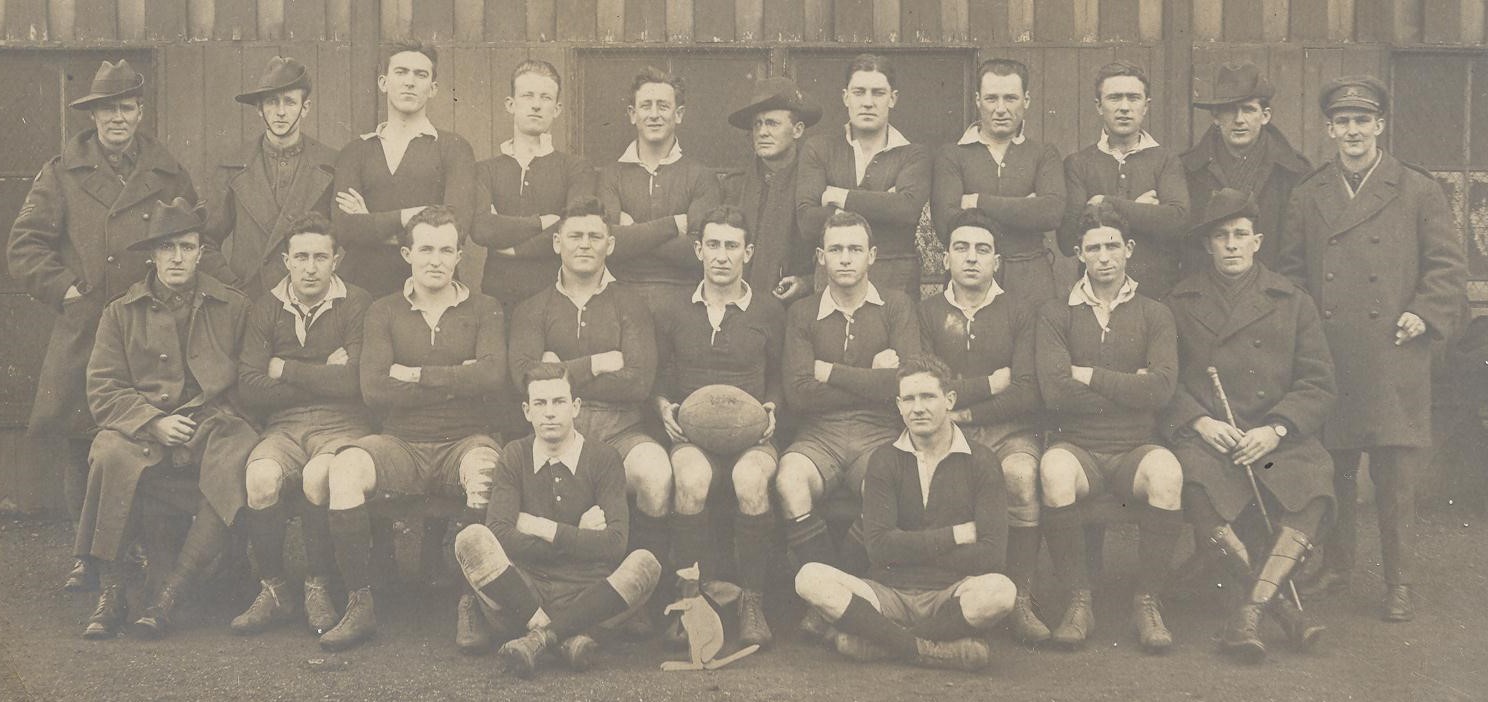Rugby Union is a sporting code that has been played by generations of service people since the earliest days of Australia’s armed forces. The story of Rugby Union in the Australian Army is an important component of the services rugby tradition, and indeed an integral part of the history of the code itself in Australia. Australian military involvement in the sport of rugby can be traced back to the early part of the nineteenth century and the recording, by the Sydney Monitor, that private soldiers in the barracks ‘are in the habit of amusing themselves with the game of football’. While the game was imported with early settlers and soldiers of the imperial regiments posted to the colonies of Australia, there was of course no ‘Army’ then as we know it today in the Australian colonies.
From the beginning of the Great War campaigns at Gallipoli in 1915 through to the years on the Western Front, rugby became well established itself as a popular pastime for Australian Imperial Force (AIF) footballers and an integral part of army sporting events between units of the AIF and of course, against the New Zealanders and British in particular. In Egypt army rugby flourished with most units of the AIF containing players who were well known in their home states
We know from photographic evidence alone that rugby union was played at all levels and all types of units, including fighting units of the AIF whether in France or the Middle East. Australian soldiers loved their sport, and being close to the front line wasn’t going to stop them from having a good match of rugby, among other sports.
The AIF HQ team was to remain a fixture of the rugby union scene for the AIF throughout the war, even though it would have seen constant turnover in players. On the Western Front, divisional teams came together to form an AIF ‘Trenches’ team to play against the French Army. With the end of the war, a new period of intense rugby union competition asserted itself in both France and England, in part to keep the AIF personnel active and engaged while they awaited repatriation to Australia. The Trenches team and the Headquarters team were to come together to form the famous 1919 AIF rugby teams which played in Paris and went on to play in Australia on their return home in 1919.
The final game of these unique AIF teams of ‘comrades in arms and in sport’ in 1920 marked the end of what had been a hugely successful series of matches and heralded a re-vitalisation of the game of rugby union football in NSW and Queensland. It was remarkable that the AIF veterans still had the capacity for tough and vigorous play after the basic diet, privation, stress and difficulties faced by them during active service. The younger men who faced them on the rugby field upon their return to Sydney faced not just physically tough men but men who had played on bigger and more lethal battlefields.
While some continued to play club rugby immediately after the war, most had given their all and were content to rest at last. The AIF team coach and manager, Matthews, stayed on to manage the 1933 Wallaby team tour of South Africa while the team captain, Watson, went on to win a DSO at Kokoda in WWII.
The history identifies the players, teams and events that have been central to the development and successes of Army Rugby. It includes key matches, results and anecdotes about the sport as it was played in Australia and abroad along with interview records with those players who have joined the ranks of the Wallabies and Wallaroos.
In the Field and On the Field: A Highlight History of the Australian Army Rugby Union, published by the AARU, 2010.

